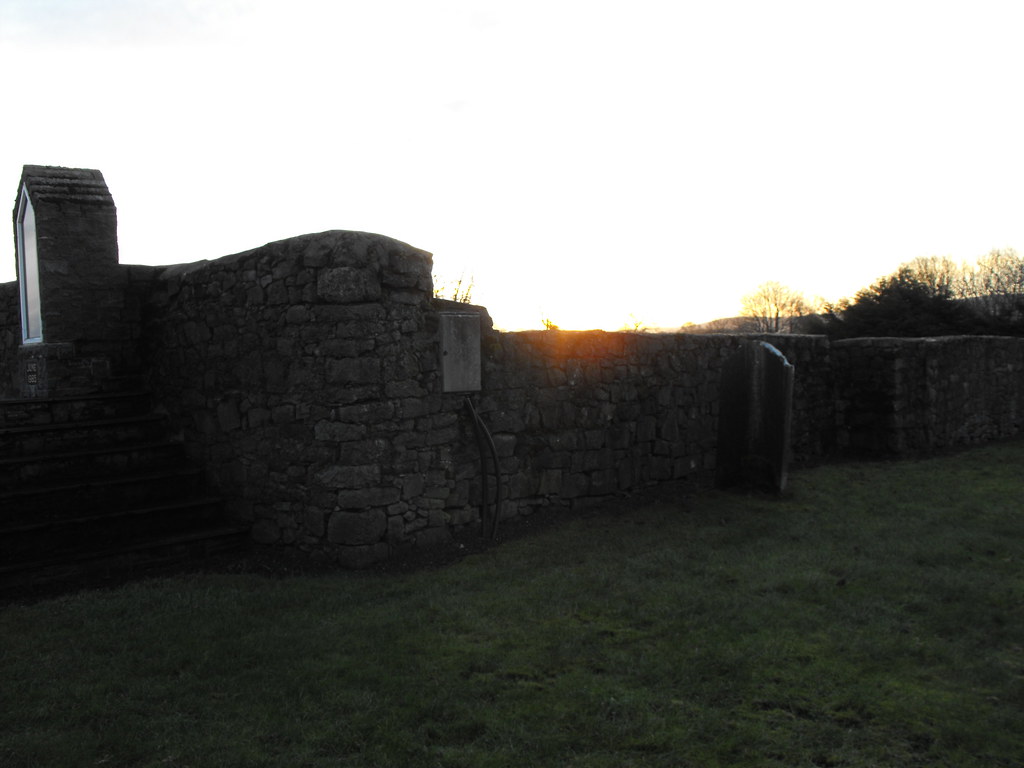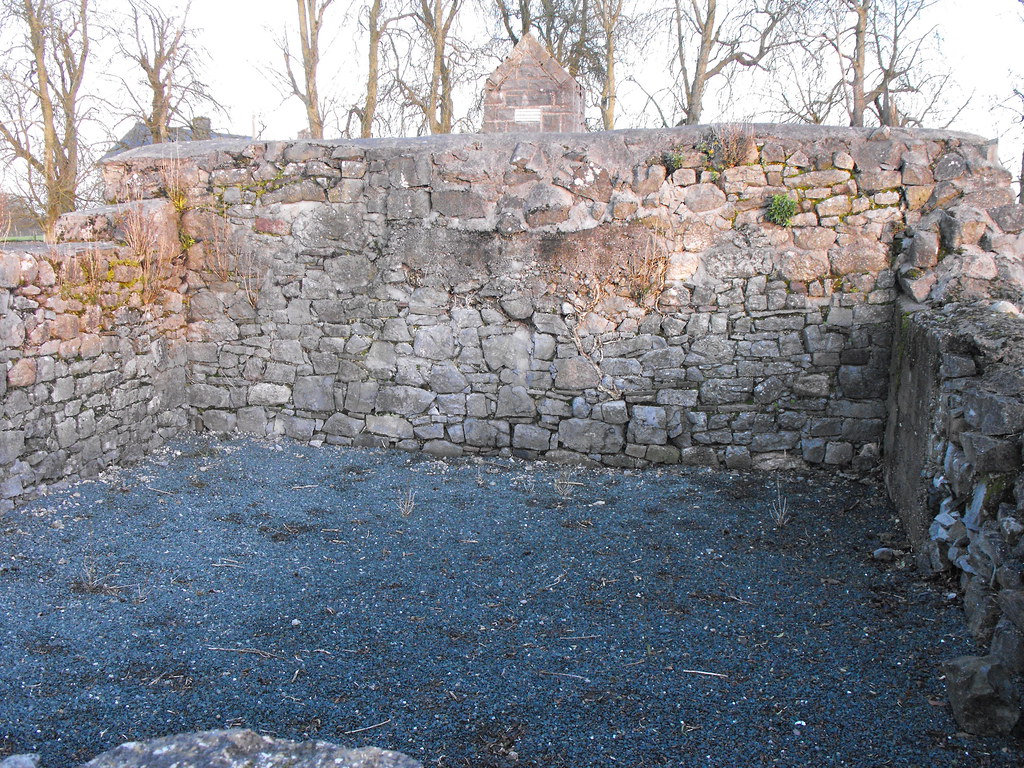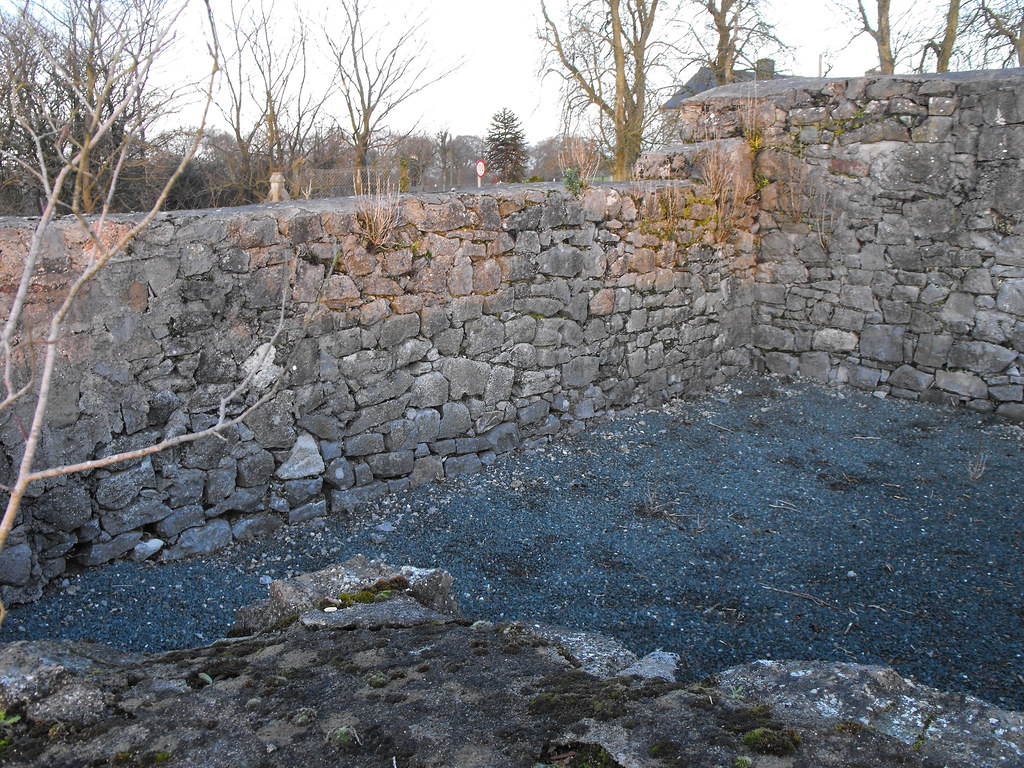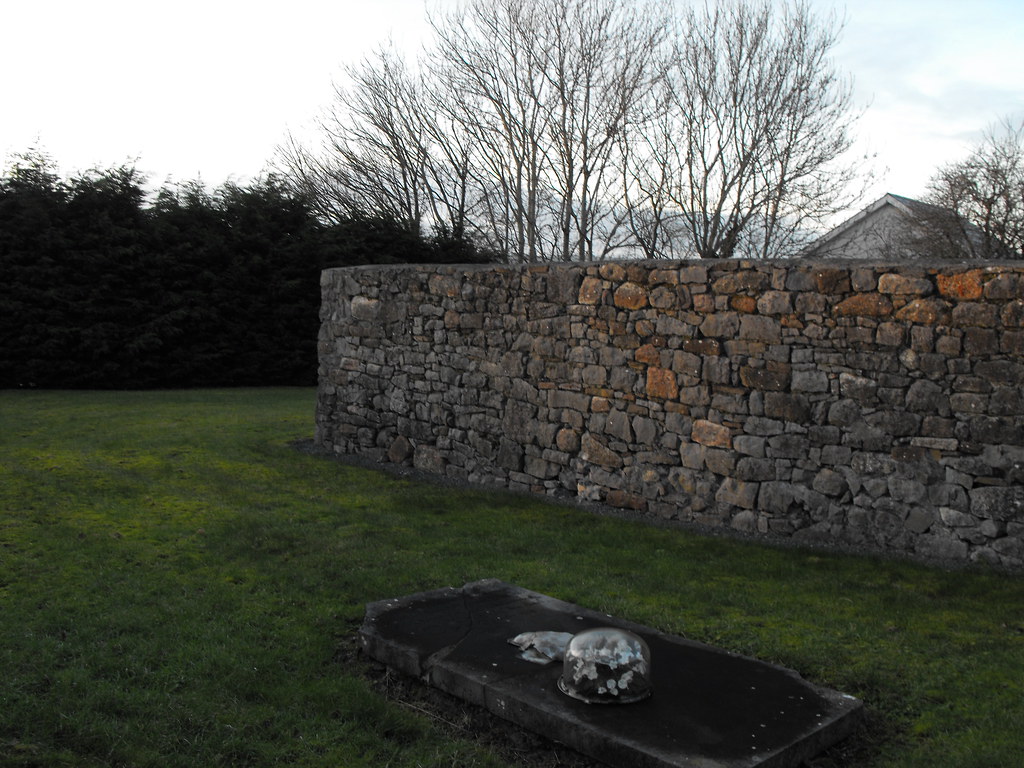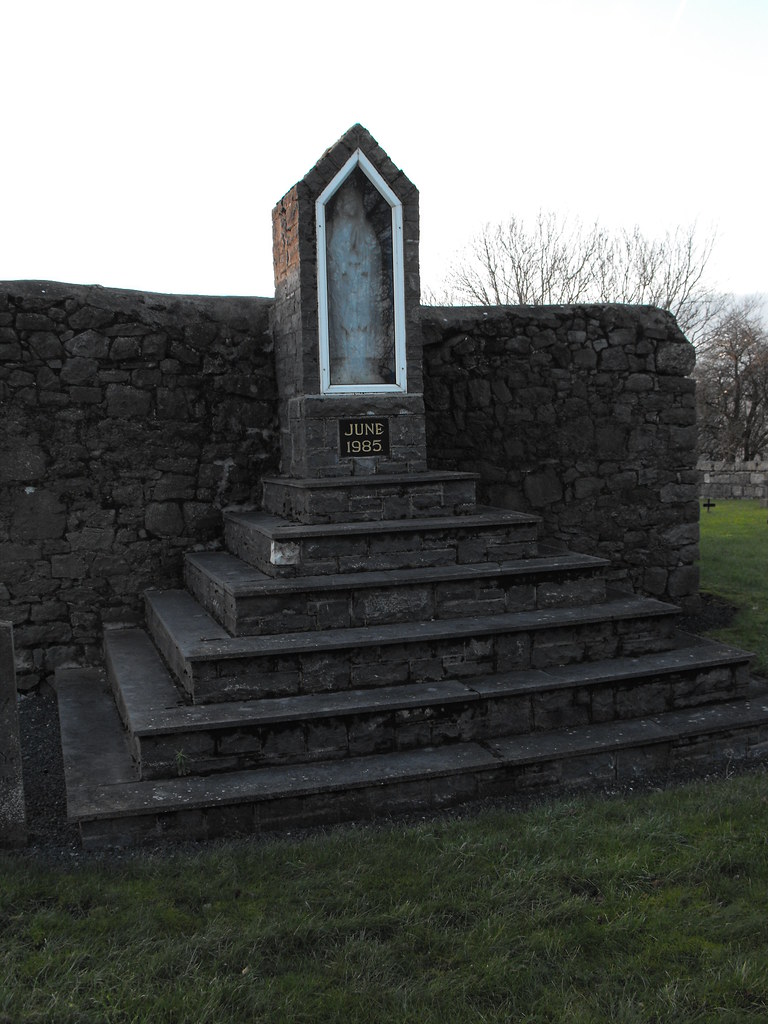We have seen that the Great Abbey of Mellifont had made seven foundations in the first eleven years. Eight foundations in total were made before the suppression. The first seven were Bective (1146), Boyle (1148), Baltinglass (in Kildare and Leighlin)(1148), Inislounaght (1148), and Manister or Manisternenay, Co. Limerick (1148), Kilbeggan (1150), Newry (1153). The final direct foundation by Mellifont was at Abbeyshrule (1200). By the time of the suppression, Mellifont had a further twenty indirect filiations. Baltinglass Abbey was founded under the patronage of Dermot Mac Murchadha, King of Leinster who was to betray his Race by inviting in the Normans twenty-one years later. McMorrough was also responsible for the romanesque Church at Killeshin. His descendants still reside in the heart of the ancient kingdom of Leinster at Borris House, near where our Mass for the Pope's Birthday was celebrated in 2012. The Abbey was given a kind of nickname in accordance with Cistercian custom, and was known as De Vallis Salutis or Valley of Salvation. Dr. Keating refers to it as 'Monasterium de Via' or the Monastery of the Way. The Abbey buildings were completed by 1170, the year before Mac Murchadha's death, when his son-in-law, the Anglo-Norman Richard de Clare, Earl of Pembroke took the kingdom for himself.
Baltinglass made four foundations Jerpoint, Co. Kilkenny (1160), Abbeymahon, Co. Cork (1172), Monasterevin (Diocese of Kildare and Leighlin)(1178), and Abbeyleix (also Diocese of Kildare and Leighlin)(1184). Thus, the Baltinglass line accounts for all the Irish Cistercian Abbeys of Kildare and Leighlin, the only Continental Cistercian Abbey of Kildare and Leighlin being Duisk Abbey, Graignamanagh, founded from Stanley in Wales in 1204. Kilenny Abbey (1162), a foundation of Jerpoint close to Duiske Abbey, was suppressed in 1227, the year before the visitation of Stephen of Lexington, since it offended against the Cistercian Rule that monasteries should be at least 12 Burgundian Leagues apart.
After the Anglo-Norman conquest of Leinster, Baltinglass retained a strong Irish identity. In 1185 the abbot of Baltinglass, Albin O’Mulloy, was made bishop of Ferns. At the close of the year 1185, Albin O'Molloy, Cistercian Abbot of Baltinglass, was appointed bishop of Ferns in the Lent of 1187, at the Provincial Council of Dublin, he administered to the Archdeacon Gerald Barry (Cambrensis), a rebuke at his presumption at casting aspersions upon the character of the Irish clergy and spoke out against the clergy coming from England and Wales, criticising their evil ways and bad example for the innocent Irish clergy. Bishop O'Molloy was present at the coronation of Richard I on 3rd September 1189. On 3rd April, 1206, King John nominated him to the Archbishopric of Cashel but the Pope declined to ratify the appointment.
However, by the turn of the thirteenth century the internal standards of observance in the Irish Abbeys had been allowed to decline. The Cistercian General Chapter heard disturbing reports and, in 1216, organised a general visitation of the Irish houses. The Irish monks resented this interference from Clairvaux and when the visitors arrived at Mellifont the gates of the monastery were shut in their faces. The troubled soon spread to the other Irish Cistercian monasteries. The visitors were blocked from entry and their presence was greeted with riot. The rebellion soon became known as the ‘conspiracy of Mellifont’.
In 1227 the abbot of Clairvaux sent two French monks to address the problems but they were able to remove no more than six abbots from office and they appointed the Anglo-Norman abbot of Owney to act in their stead. The Irish bitterly resented him and did all they could to hinder his progress.
From the foundation of Mellifont itself there had been conflict between the ethos of the French monks and their Irish brethren to such an extend that St. Malachy received the complaints of St. Bernard when the French returned home in dispute.
Those mutual misunderstanding were only intensified within the Order after the Norman invasion, when the Mellifont filiation acted as a native congregation in contrast to those Cistercian houses of directly Norman foundation. The misunderstanding came to a head in the early 13th century. The Mellifont filiation resisted efforts of the general Chapter to subject it to regulation, but was eventually compelled to submit. After those abortive attempts to impose continental observance, Stephen of Lexington, abbot of Stanley, Graiguenamanagh’s motherhouse undertook a visitation of the Irish Cistercian houses in 1228 on behalf of the General chapter, to reform them radically. The Mellifont filiation was broken up and its member houses were re-assigned to the oversight of English, French and Welsh houses, Margam, Buildwas, Furness, Fountains and Clairvaux and Lexington placed groups of Anglo-Norman monks in the Irish houses and deposed those abbots involved in the rebellion, appointing some twelve abbots himself.
The specific causes of dispute are hard to discover. It seems, however, that at least some of what was in Anglo-Norman eyes abuse, and infringement of Cistercian rule, was to the Irish simply the accommodation of traditional monastic practice. Thus, for example, Irish monks preferred to dwell in individual cells, rather than communionally. Equally, a nun’s monastery, adjacent to that of the male religious, might be unacceptable to Lexington but was perfectly respectable in Gaelic Ireland - and indeed to the modern-day Institute of Chrust the King, the Canons Regular of the New Jerusalem, or the Abbey of La Barroux!
Lexington’s condemnation of sins of the flesh may refer not to abuse in the strict sense, but a ‘monasticism’ that encompassed a ‘para-monastic' married Christian laity, in the older Irish manner, which we could call Third Orders or secular Oblates today.
Only gradually did the General Chapter cast off Anglo-Norman dominance and realise the true situation. In 1274 the General Chapter condemned the laws being enforced under Norman control, forbidding the reception of native Irish novices or the appointment of Irish monks to any position of authority in their communities. Finally it reversed its earlier decision and returned to Mellifont its jurisdiction over its filiations and Baltinglass returned to the restored Mellifont filiation. The following thirty years brought a succession of Irish abbots. It was a period of hope but that hope was again stifled by political pressure. The civil powers ignored the General Chapter's condemnation of Anglo Norman discrimination. The infamous Statutes of Kilkenny merely institutionalized that discrimination and the Black Death struck another blow to the once flourishing Order in Ireland. By the end of the 14th century Mellifont had become a recognised Anglo Norman institution and was never again to see the phenomenal flourishing of monastic life, substituting instead royal patronage and the acquisition of property.
Henry Tudor's commissioners described Baltinglass in 1541 as owning castles at Graungeforth, Knocwyre, Mochegraunge, Graungerosnalvan, Grangecon, Littlegraunge amongst others. In the early sixteenth century the annual income of the abbey was estimated at £76 (£126 in peacetime) making it one of the richest Cistercian abbeys in Ireland at that time. The Dissolution came quickly to Baltinglass. It was one of only five Irish Cistercian monasteries suppressed in the first round of closures, 1536-7.
Not content with the dissolution of the monastery, the Anglicans also raped the monastic church and buildings. The sanctuary, as can be seen from the pictures was crudely adapted as a Protestant church. As can be seen from the late 18th century engraving in the National Library of Ireland collection, the tower at the central crossing, a common, if un-Cistercian, feature of the Irish Cistercian Churches, was still extant, and the monstrously rustic tower at the entrance to the Protestant Church, sitting with ill-informed arrogance in the middle of the Nave, was a very late excresence.
The gate house, a feature that is still prominent at Mellifont also, became the home of the FitzEustace family. The gate house was broken down, along with parts of the monastery, when James FitzEustace rebelled in 1580. In 1587 the gate house restored and survived until 1882 when it was knocked down to provide building materials for the new house and church of the Church of Ireland.
The arches of the Abbey are it's most distinctive feature, having both squared and rounded piers still standing along the south side of the nave. The north-east crossing pier is decorated with a lion and foliage ornaments. The striking similarity between these nave arches and those of Jerpoint Abbey are notable. One depicts a warrior thrusting forward with a circular shield. Another strikingly similar feature are the stone tiles decorated, it is said by the same master craftsman, the so called 'Baltinglass Master', who also worked on Jerpoint Abbey. Some of these tiles have been placed for display so that you can get a close up view. To the side of the Church wall is a huge plinth with a large stone pyramid atop, which was constructed as a mausoleum for the Stratford family. Another example of Anglican barbarism that has breached the East Wall of the first chapel in the Southern Transept.






































